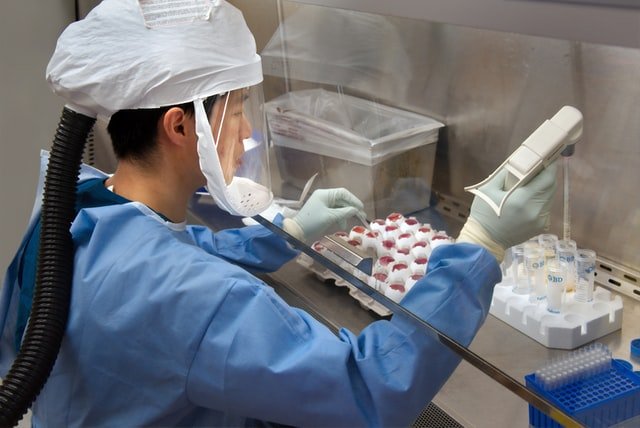MELANOMA
- Biotexus
- July 30, 2024
About the skin
The skin is the largest organ in the body. It protects against infection and injury and helps regulate body temperature. The skin also stores water and fat and produces vitamin D.
The skin is made up of 3 main layers:
- Epidermis:The outer layer of skin.
- Dermis:The inner layer of skin.
- Hypodermis:The deep layer of fat.
About melanoma
The deepest layer of the epidermis, just above the dermis, contains cells called melanocytes. Melanocytes produce skin pigments or colors. Melanoma is a malignant tumour that develops when healthy melanocytes mutate and expand out of control. A malignant tumour is one that has the potential to develop and spread to other regions of the body. Melanoma can sometimes arise from an existing mole on a person’s skin. When this happens, the mole will experience modifications that are generally visible, such as changes in form, size, colour, or the mole’s border.
Melanoma may appear anywhere on the body, including the head and neck, beneath the nails, the genitals, and even the soles of the feet or palms of the hands. Melanoma isn’t always the same hue as a mole. Amelanotic melanoma is a kind of melanoma that has no colour or is somewhat red.
Melanoma may often be treated with surgery if caught early. Melanoma, on the other hand, is one of the most dangerous types of skin cancer. Invasive melanoma is a kind of melanoma that grows deep into the skin. Metastatic melanoma is a kind of melanoma that can infect blood arteries and spread to lymph nodes and other regions of the body.
RISK FACTORS:
The following factors may increase the risk of developing melanoma :
Sunlight: Exposure to ultraviolet light (UV) from the sun plays an important role in the development of skin cancer. People who live in highlands or in areas exposed to sunlight all year round are at increased risk of developing skin cancer. People who spend a lot of time outdoors at lunch are also at increased risk. Avoid outdoor sunbathing to reduce the risk of skin cancer.
Exposure to UVB (UVB) radiation from the sun appears to be more closely associated with melanoma, but recent information suggests that UVA (UVA) is not only the onset of melanoma. Cells can also cause skin cancer, suggesting that they also play a role in the development of the basal and squamous epithelium. UVB radiation causes sunburn and cannot penetrate car windows or other types of glass, but UVA can penetrate glass and cause skin aging and wrinkles in addition to skin cancer. Therefore, it is important to protect the skin from both UVA and UVB radiation.
Indoor tanning : People who use solariums, tan studios, or sun lamps are at increased risk of developing all types of skin cancer. We do not recommend the use of indoor solarium.
People with many moles or abnormal moles called dysplastic nevus or atypical moles are at increased risk of developing melanoma. Dysplastic nevus is a large bruise of irregular color and shape. Doctors may recommend regular skin photographs to carefully monitor the skin of people with a lot of moles.
Fair skin: People with fair-skinned, blonde or red hair, blue eyes, and freckles are at increased risk of developing melanoma. This risk is also higher for people who are more prone to sunburn than sunburn.
Family history: About 10% of patients with melanoma have a family history of melanoma. If there are relatives (parents, siblings, sisters, or children) diagnosed with melanoma, the risk of an individual developing melanoma is two to three times the average risk. This risk increases when several families living in different locations are diagnosed with melanoma. Therefore, it is recommended that close relatives of people with melanoma check their skin regularly.
Familial melanoma : Changes called mutations in certain genes that can lead to melanoma, such as CDKN2A, CDK4, P53, and MITF, have been identified, but these are rare. Only a few families with a history of melanoma actually inherit these gene mutations from generation to generation. Scientists are looking for other genes and environmental factors that may affect the risk of developing melanoma and other cancers.
Previous skin cancer : People who already have melanoma are at increased risk of developing additional new melanoma. People with basal cell carcinoma of the skin or squamous cell carcinoma are also at increased risk of developing melanoma. Therefore, people who already have skin cancer need continuous follow-up to be aware of other types of cancer.
Race or ethnicity : The incidence of melanoma is about 20 times higher in whites than in blacks. However, melanoma can develop regardless of race or ethnicity.
Age : While the mean (average) age of people diagnosed with melanoma is 65 years old, the median age at which people are diagnosed with melanoma is just above 50 years old. Median is the midpoint, which means that about half of people with melanoma are diagnosed when they are younger than 50 and about half are diagnosed when they are older than 50. Melanoma occurs in young adults more often than in many other types of cancer.
Age : The median age at which people are diagnosed with melanoma is slightly above 50 years old, whereas the mean (average) age of those diagnosed with melanoma is 65 years old. The median is the midpoint, which suggests that around half of those diagnosed with melanoma are under the age of 50 and the other half are above the age of 50. Melanoma strikes young individuals more frequently than many other cancers.
Weakened or suppressed immune system : People with weakened immunity or taking certain medications that suppress immune function are at increased risk of developing skin cancer such as melanoma.
SYMPTOMS :
“ABCDE” rule Changes in mole size, shape, color, or feel are often the first warning signs of melanoma. These changes can occur with existing bruises. Alternatively, melanoma may appear as a bruise that looks new or abnormal. The “ABCDE” rule helps to remember the melanoma warning sign:
Asymmetry : The shape of one-half of the mole does not match the other.
Border: The edges are ragged, notched, uneven, or blurred.
Color : Shades of black, brown, and tan may be present. Areas of white, gray, red, or blue may also be seen.
Diameter : The diameter is usually larger than 6 millimeters (mm) or has grown in size. This is about 1/4 inch in diameter, about the size of a pencil eraser. Melanoma may be smaller when it is first detected.
When to see a doctor ?
Many melanomas are dark brown or black in colour, and they are frequently regarded as changeable, odd, or “ugly.” Any skin irregularity, whether coloured or not, that is rapidly developing or changing and does not go away should be evaluated by a doctor. Bleeding might indicate a more advanced stage of melanoma. Furthermore, melanoma is more likely to emerge when a new and atypical mole appears.
TREATMENT :
The thickness of the initial melanoma, whether the disease has spread, the stage of the melanoma, the existence of certain genetic mutations in melanoma cells, the rate of melanoma growth, and the patient’s other medical problems all influence treatment recommendations. Treatment selections are also influenced by prospective adverse effects, as well as the patient’s preferences and general health.
Surgery : During an operation, the tumour and some surrounding healthy tissue are removed. A surgical oncologist is generally the one who performs this operation.
Persons with local melanoma and most people with regional melanoma are treated with surgery. Surgery may be an option for some persons with metastatic melanoma. Melanoma may be labelled “unresectable” if surgery is not a possibility. Doctors will examine the stage of the disease as well as the patient’s particular risk of recurrence when proposing a treatment strategy.
Wide excision:The primary therapy for melanoma is surgical removal of the original melanoma on the skin, often known as excision. The surgery’s scope is determined by the thickness of the melanoma. The majority of melanomas are discovered when they are less than 1.0 mm thick, and outpatient surgery is frequently the sole option. A doctor removes the tumour, under-the-skin tissue, and some healthy tissue around it, called a margin, to ensure that no cancer cells remain.
Radiation therapy : Radiation therapy is the use of high-energy x-rays or other particles to destroy cancer cells. The most common type of radiation therapy is called extracorporeal radiation therapy, which is radiation emitted by an extracorporeal machine. The beams generated by this device are directed in different directions and blocked with special techniques to reduce side effects.
Treatment with drugs : Systemic therapy is the use of drugs to destroy cancer cells. This type of drug is delivered through the bloodstream and reaches cancer cells throughout the body. Systemic therapy is usually prescribed by an oncologist, a doctor who specializes in treating cancer with drugs.
Immunotherapy : Immunotherapy, also called biological therapy, aims to increase the body’s natural defenses to fight cancer. It uses materials made in the body or in the laboratory to enhance, target, or restore the function of the immune system.
Target therapy : Targeted therapy is a treatment that targets a specific gene, protein, or tissue environment in the cancer that contributes to the growth and survival of the cancer. This type of treatment blocks the growth and spread of cancer cells and limits damage to healthy cells.
Prevention :
Different factors cause different types of cancer. Researchers continue to study the factors that cause melanoma, including how to prevent it. There is no proven way to completely prevent melanoma, but it may reduce the risk.
Reducing exposure to UV light can significantly reduce the risk of developing skin cancer. This means reducing exposure to sunlight and avoiding the use of indoor tanning appliances. This is important for people of all ages and especially for people with other risk factors for melanoma .
Sun damage builds up over time, so it is important to take the following steps to reduce sun exposure and avoid sunburn:
Limit or avoid direct exposure to the sun between 10:00 AM and 4:00 PM.
Wear sun protection clothing, such as a wide-brimmed hat that covers your face, neck, and ears. Clothing made of fabrics marked with a UV Protection Factor (UPF) may provide better protection. UV protection sunglasses are also recommended.
Use a wide spectrum sunscreen that protects against both UVA and UVB rays and has a sunscreen factor (SPF) of at least 30 throughout the year. Apply at least 30 ml of sunscreen to your entire body after every 2 hours, after heavy sweating, or after soaking in water every hour.
Avoid recreational outdoor sunbathing.
Do not use sun lamps, tanning beds, or tanning salons.
Examine your skin regularly. This should include examinations by a health care professional, as well as self-examinations.



















